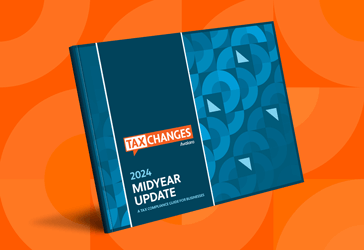How Sales Tax Works, an Explanation for Non-U.S. Companies - Will's Whiteboard
The U.S. is one of the only OECD countries to use a final sales tax. The basic concept of U.S. sales tax is simple, but the way it gets applied can be complex enough to make your head spin. Watch this video for an introduction to U.S. sales tax, including the critical components businesses should consider in order to stay compliant.
Transcript
Hi. Welcome to Will’s White Board. I’m Will. The U.S. is one of the very few countries in the world that applies a final sales tax as it’s primary transactional tax system. Most OECD countries use a VAT or GST system. If you’re not used to doing business in the the U.S., this can make understanding sales tax a bit difficult. So today I’m going to explain what sales tax is and focus on three key areas of compliance.
How does sales tax work in the U.S? Well sales tax is a consumption tax on the final sale of a good or a service. Let’s take the example of a retailer in U.S. that sells to a consumer. They are selling work boots here. The retailer would charge sales tax on the sale of the work boots as a percentage of the sales price, collect that tax from the consumer and remit it to the right government agencies at the right times. Seems pretty simple. However, there a few factors which make sales tax compliance in the U.S quite complex.
Number one, there are over 12,000 taxing jurisdictions in North America and each can have their own rules and rates when it comes to sales tax. So the retailer needs to keep track of the right sales tax rate for these work boots across all the jurisdictions where they do business. Rules can also vary regarding product taxability. So those work boots might be taxed at different rates in different states relative to other types of clothing. In some states, they may be exempt. And there’re also certain times of the year when they might be exempt in certain states. For example in Texas, there is a sales tax holiday, often in August where work boots are exempt from tax, but for the rest of the year, you need to charge sales tax on work boots in Texas. This makes for a very complex set of rules when you are trying to stay compliant in the U.S.
Let’s jump further up in the supply chain. Unlike VAT or GST, where tax is remitted to the government each time value is added, sales tax is only collected and remitted on the final sale. Let’s say you had a manufacturer who made the work boots and sold it to the retailer. Even though they might not collect tax from the retailer, because the retailer is a re-seller, they are still on the hook for some paperwork. They need to collect documentation that proves this is a tax exempt sale and there are some other reasons you might make tax exempt sales in the U.S. For example some entities enjoy tax exempt status such as non-profits.
Then there is the question of where a business is obligated to collect and remit sales tax in the U.S. The question of nexus, nexus being the connection between the business and the taxing jurisdiction that triggers the tax obligation. These, again, vary from jurisdiction to jurisdiction. So in most jurisdictions, if you have physical presence there, like a warehouse or office buildings, you likely have to collect and remit sales tax there. However, there’re are other laws. For example, if you have remote workers in some tax jurisdictions, you might have nexus there. If you send people to trade shows in some jurisdictions, you might have nexus there. If you work with affiliates in some jurisdictions, they can give you nexus. To the extent that in some jurisdictions, if an affiliate puts a link on their website that sends customers to your website, you could be liable for collecting sales tax in that jurisdiction.
As you can see, a simple tax concept can get quite complex in the U.S. We have a lot of resources on our side including white papers and videos if you’d like to learn more about any aspects of this tax system. In the meantime, I hope this helps you understand U.S. Sales Tax a little bit better. Thanks very much. I’ll see you next time.
Stay up to date
Sign up for our free newsletter and stay up to date with the latest tax news.













